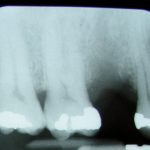
Inlay-retained fixed dental prosthesis (IRFPDs) are a conservative treatment option for the replacement of missing posterior teeth. They are prepared using a wide range of framework materials (metal, ceramic, fibre-reinforced composite) tooth preparation designs, cement bonding techniques and systems and reported survival rates vary widely.
The aim of this review was to evaluate the survival and complication rates of IRFDPs.
Methods
Searches were conducted in PubMed, Embase, Cochrane database of systematic reviews, and Cochrane Central Register of Controlled Trials (CENTRAL) databases. Randomised controlled trails (RCTs), controlled clinical trials (CCTs) and prospective cohort studies (PC) on IRFDPs with a mean follow-up period of at least 2 years were considered.
Two reviewers independently selected studies, abstracted data, with study quality being assessed using the Newcastle-Ottawa scale (NOS) and Cochrane risk of bias tool. For each study, the failure and complication rates of IRFDPs were calculated and pooled using a random effect model and Poisson regression
- Results
- 11 studies (1 RCT, 10 PC) involving a total of 341 patients and 394 IRFDPs were included.
- The only RCT was at high risk of bias
- 1 of the Cohort studies was considered to be of high quality the remainder of low quality.
- Overall 61 out of 394 IRFDPs failed over a mean observation period of 3.8 years.
- 5-yr survival rates ranged from 57.7% to 100%.
- Based on a random effects model estimated
- 3-yr survival rate = 92.6% (95% CI: 85.8-97.6%)
- 5-yr survival rate = 87.9% (95% CI: 77.4-96.1%)
- Annual failure rate = 2.58% (95% CI: 0.80–5.12%)
- Annual failure rate for ceramic/metal group = 3.78% (95% CI: 0.87–8.44%)
- Annual failure rate for fibre-reinforced composite (FRC) = 1.42% (95% CI: 0.06–3.87%)
- Secondary caries and sensitivity were the most frequent Biological complications, with annual rate of secondary caries = 0.47% (95% CI: 0.09–1.78%)
- IRFDPs had a relatively high rate of debonding with an estimated annual debonding rate =1.08% (95% CI: 0.15–2.58%),
- overall estimated 3-yr debonding rate = 3.2% (95% CI: 0.4–7.4%)
- 5-yr debonding rate = 5.3% (95% CI: 0.7–12.1%)
Conclusions
The authors concluded: –
Overall, IRFDPs can be recommended as viable short- or middle- term minimally invasive alternatives to short-span conventional FDPs and ISCs, and the clinical outcome of IRFDPs as long-term definitive restorations requires further study due to scarce well documented scientific evidence.
Comments
This systematic review adopts a good methodological approach although limiting the search to English language studies may mean that relevant studies have been excluded. The wide range of inlay designs, framework materials, surface treatments and cement systems used means that the results should be interpreted cautiously. This fact that the studies are relatively small (average 36, range 14-60 patients) , of low quality and with short follow up times also needs to be taken into consideration. The reviewers call for trials involving comparison groups based on different retainer designs, materials and bonding systems using a consistent definition of ‘survival’ and comprehensive reporting of biological and technical complications highlights an need to improve the quality of the evidence-base.
Links
Primary paper
Chen J, Cai H, Suo L, Xue Y, Wang J, Wan Q. A systematic review of the survival and complication rates of inlay-retained fixed dental prostheses. J Dent. 2017 Apr;59:2-10.doi:10.1016/j.jdent.2017.02.006. Epub 2017 Feb 24.Review. PubMed PMID: 28212978.
Other references
Dental Elf – 2nd May 2017
Fibre-reinforced composites fixed partial dentures – survival rates
